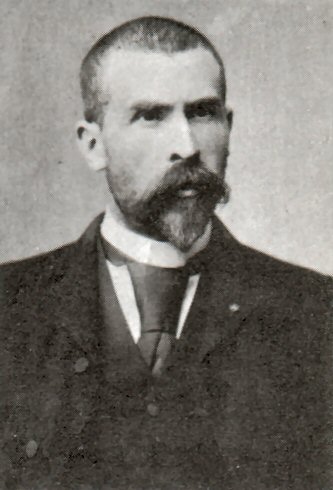<Back to Index>
- Chemist Willard Frank Libby, 1908
- Writer Thomas Chandler Haliburton, 1796
- Co-founder of the Pasteur Institute Pierre Paul Émile Roux, 1853
PAGE SPONSOR

Pierre Paul Émile Roux FRS (December 17, 1853, Confolens, Charente – November 3, 1933, Paris) was a French physician, bacteriologist and immunologist who was one of the closest collaborators of Louis Pasteur (1822 - 1895), a co-founder of the Pasteur Institute and discoverer of the anti - diphtheria serum, the first effective therapy for this disease.
Roux got his baccalaureate in sciences in 1871 and started his studies in 1872 at the Medical School of Clermont - Ferrand. He worked initially as a student assistant in Chemistry at the Faculty of Sciences, under Émile Duclaux. From 1874 to 1878 he continued his studies in Paris and was admitted as clinical assistant at Hôtel - Dieu. Between 1874 and 1877 Roux received a fellowship for the Military School at Val - de - Grâce, but quit it after failing to present his dissertation in due time. In 1878 he started to work as an assistant to the course on fermentation given by his patron Duclaux at the Sorbonne University and was recommended by him to Louis Pasteur, who was looking for assistants. He was accepted and joined Pasteur’s laboratory as a research assistant from 1878 to 1883 at the École Normale Supérieure in Paris, engaging his research on the microbiological causation of diseases. In this capacity, he worked with Pasteur in avian cholera (1879 - 1880) and anthrax (1879 - 1890) and was involved in the famous experiment of anthrax vaccination of animals at Pouilly - le - Fort. In 1883, he presented a doctoral dissertation in medicine titled Des Nouvelles Acquisitions sur la Rage, where he described his research on rabies with Pasteur since 1881, which led to the development of the first vaccination against this fearsome disease. Roux was now recognized as an expert in the nascent sciences of medical microbiology and immunology. With other Pasteur’s assistants (Edmond Nocard, Louis Thuillier and Straus) Roux traveled in 1883 to Egypt to study a human cholera outbreak there, but they were unable to find the pathogen for the disease, which was later discovered in Alexandria by the German physician Robert Koch (1843 - 1910).
In 1883 and in the following 40 years, Émile Roux became closely involved with the creation of what was to be the Pasteur Institute, and shared his time between biomedical research and administrative duties. In 1888, an important year in his life career, he accepted the position of Director of Services, joined the Editorial Board of the Annales de l’Institut Pasteur, and established the first regular course on microbiological technique, which would become extremely influential in the training of many important French and foreign researchers and physicians in infectious diseases. In the same year, he published with Alexandre Yersin (1863 - 1943) the first of his classical works on the causation of diphtheria by the Klebs - Loeffler bacillus, then an extremely prevalent and lethal disease, particularly among children. He studied its toxin and its properties, and began in 1891 to develop an effective serum to treat the disease, following the demonstration, by Emil Adolf von Behring (1854 - 1917) and Kitasato Shibasaburō (1852 - 1931) that antibodies against the diphtheric toxin could be produced in animals. He demonstrated successfully this antitoxin with Auguste Chaillou, in a study with 300 diseased children in the Hôpital des Enfantes - Malades and was henceforth hailed as a scientific hero in medical congresses throughout Europe.
In the following years, Roux dedicated himself indefatigably to many investigations on the microbiology and practical immunology of tetanus, tuberculosis, syphilis, and pneumonia. He was elected a member of the Royal Swedish Academy of Sciences in 1900. In 1904 he was nominated to the Pasteur’s former position as General Director of the Pasteur Institute. In 1916 he moved to a small apartment in the Pasteur Hospital, where he died on November 3, 1933.